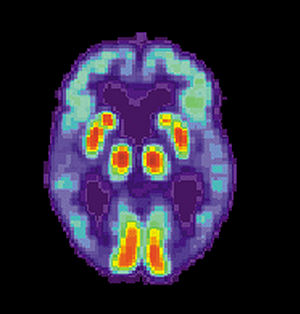
As the boomer generation ages it is probable that there will be more posts such as the one I saw this week from a friend on Facebook. Their plea was for suggestions and recommendations for a good solution to help alleviate the pain they were experiencing from inflammation.
Externally, inflammation can be recognized by redness, swelling and pain. Internally, it is a lot more difficult to to recognize and may well go undetected for long periods of time. The effects of inflammation can also range from minor to chronic. An example of a minor case of inflammation may include bacteria causing an infection such as from a splinter piercing the skin. The more serious chronic inflammation may be a common factor in many age-related diseases such as Diabetes, arthritis, heart disease, cancer or Alzheimer's.
There are over 500 results on Pubmed.gov when searching NRF2 and inflammation. A couple of examples of the positive role that NRF2 had on inflammation.
The first study we will highlight is one called "Transcription Factor Nrf2 Regulates Inflammation" which was published in the Journal of Molecular and Cellular Biology. This inflammation. study dates back to 2003 in which two groups of mice with pleurisy were tested. The one group was treated with a Nrf2 activator, cyclooxygenase 2 inhibitor NS-398 the other group was not treated. The conclusion of the study shows that the mice with elevated NRF2 had less inflammation than the mice that were not treated. .
"Administration of 15d-PGJ into the pleural space of NS-398-treated wild-type mice largely counteracted both the decrease in PrxI and persistence of neutrophil recruitment. In contrast, these changes did not occur in the Nrf2-deficient mice. These results demonstrate that Nrf2 regulates the inflammation process downstream of 15d-PGJ by orchestrating the recruitment of inflammatory cells and regulating the gene expression within those cells."
The following study "Nrf2 is essential for cholesterol crystal-induced inflammasome activation and exacerbation of atherosclerosis." Published in the
European Journal of Immunology. shows the interaction between NRF2 and the inflammation causing protein called inflammasome.
Quoting from the study, "Here we have identified the oxidative stress-responsive transcription factor NF-E2-related 2 (Nrf2) as an essential positive regulator of inflammasome activation and IL-1-mediated vascular inflammation. We show that cholesterol crystals, which accumulate in atherosclerotic plaques, represent an endogenous danger signal that activates Nrf2 and the NLRP3 inflammasome."
So, in response to my friend looking for solutions to their inflammation concerns, we suggest researching further in Pubmed and other reputable journals as well as getting the advice of a healthcare professional.
Please validate any information here with a healthcare professional. The content is provided for education purposes, This content has not been evaluated by the Food and Drug Administration. Any advice or products mentioned is/are not intended to diagnose, treat, cure, or prevent any disease,











